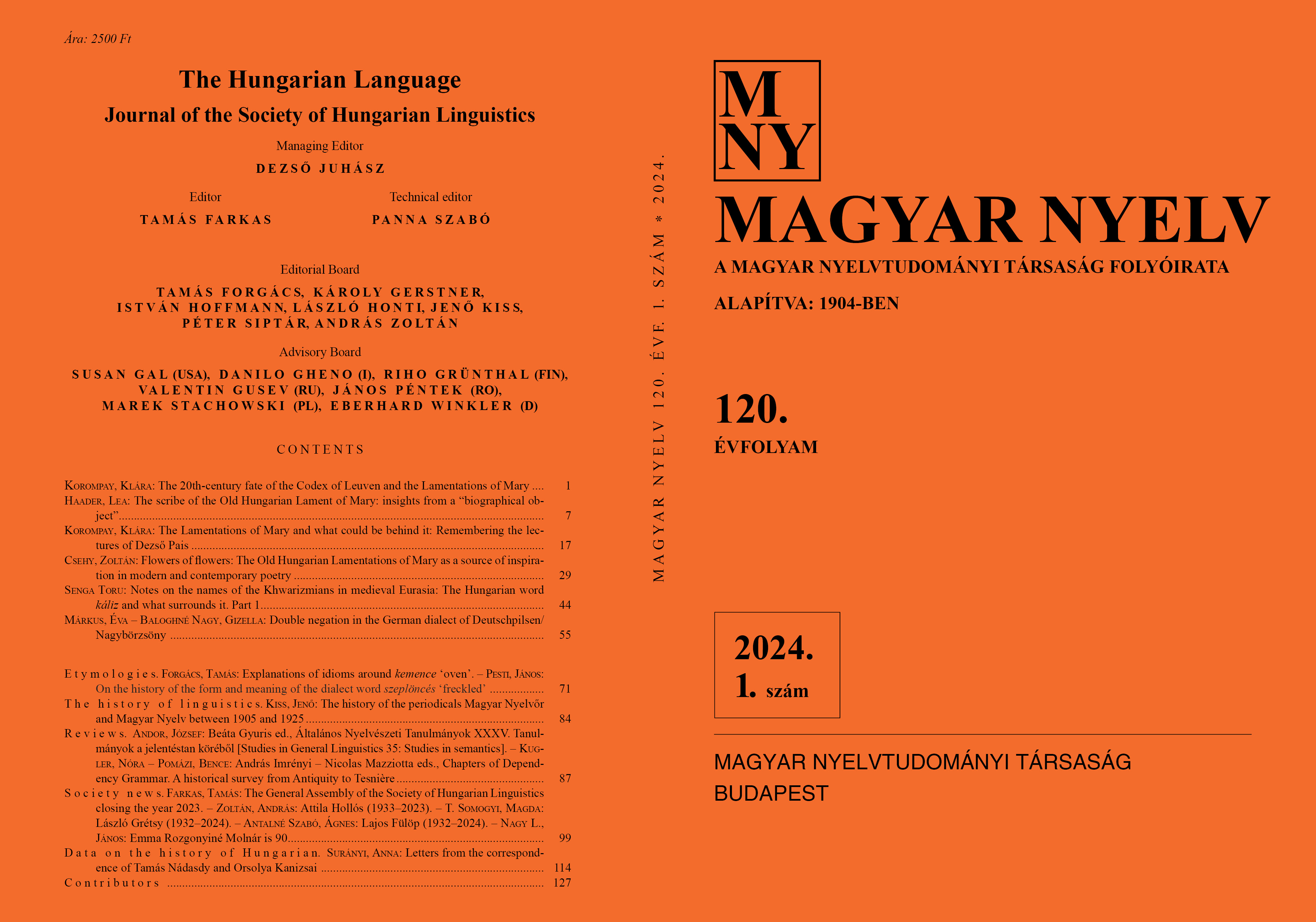Flowers of flowers
The Old Hungarian Lamentations of Mary as a source of inspiration in modern and contemporary poetry
Keywords:
The Old Hungarian Lamentations of Mary, history of effect, intertextuality, modern and contemporary Hungarian literatureAbstract
This paper deals with five strategies for the poetic afterlife of the poem Old Hungarian Lamentations of Mary. These strategies are not historically fixed but dynamic. The first strategy involves the blind re-creation of the text by modern poetic means: transcriptions, 'translations', paraphrases. The second approaches its subject from the direction of poetic variations in the form of commentary: these imitative texts incorporate, integrate and poetically (re)interpret the original text or a significant part of it. The third creative strategy is represented by montage texts: in this case, the authors treat the poem mainly as a monument of cultural memory, and its historical-canonical position rather than its meaning is more important, and usually these fragments of quotation serve to reinforce other, individual poetic messages. In the following strategy, the focus is on procedures that explore the possibilities of dialogue between texts. Allusions and intertexts, for example, treat the archetype as a relational text between death poetry, loss poetry and trauma poetry. Within the framework of the fifth mode of text use, the text leaves linearity, acquires an intermediate (inter-genre) character, e.g. inspires picture poems, phonic poems, or the dialogue of texts is realized within the framework of dramatized stage productions. The last strategy I would call register-shifting transpositions: these successor texts often have a confrontational edge in relation to the original text, often even exploiting the poetic energies of a blasphemous effect (e.g. by blending sacral and erotic registers).This also includes playful transcriptions which infuse certain, mainly formal, patterns of the poem with effects of humour, and use the text out of its original context merely to transform syntactic, stylistic or schematic patterns or to intensify the play of the mnemotechnic. These strategies often work together, in various combinations, and it is often their exceptional interplay that creates the validity of the new poetic composition. The study analyses the poems of Sándor Weöres, Sándor Rákos, Lajos Áprily, Endre Szkárosi and György Galántai, Katalin Ladik, Gábor Schein and Virág Erdős, among others.
Downloads
Published
Issue
Section
License
Copyright (c) 2024 Zoltán Csehy

This work is licensed under a Creative Commons Attribution-NonCommercial-NoDerivatives 4.0 International License.
Magyar Nyelv is a Diamond Open Access periodical. Documents can be freely downloaded and duplicated in an electronic format, and can be used unchanged and with due reference to the original source. Such use must not serve commercial purposes. In the case of any form of dissemination and use, Hungarian Copyright Act LXXVI/1999 and related laws are to be observed. The electronic version of the journal is subject to the regulations of CC BY-NC-ND (Creative Commons – Attribution-NonCommercial-NoDerivatives).
The journal permits its authors, at no cost and without any temporal limitation, to make pre-print copies of their manuscripts publicly available via email or in their own homepage or that of their institution, or in either closed or free-for-all repositories of their institutions/universities, or other non-profit websites, in the form accepted by the journal editor for publication and even containing amendments on the basis of reviewers’ comments. When the authors publicize their papers in this manner, they have to warn their readers that the manuscript at hand is not the final published version of the work. Once the paper has been published in a printed or online form, the authors are allowed (and advised) to use that (post-print) version for the above purposes. In that case, they have to indicate the exact location and other data of the journal publication. The authors retain the copyright of their papers; however, in the case of an occasional secondary publication, the bibliographical data of the first publication have to be included.



